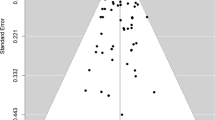Conclusion
Laboratory experiments are a welcome development that promise to make a significant contribution to the study of economic behavior (Heiner, 1985; Plott, 1982; Smith, 1982, 1985). While relatively new to economics, controlled laboratory studies of human behavior have long constituted the core of experimental psychology where there is a wealth of methodological experience from which experimental economists might profitably draw. In particular, current attempts to apply laboratory auction methods to valuing nonmarket environmental goods would be improved by more rigorous experimental design and data analysis procedures.
Close scrutiny of the C/S experiment on valuing a private good revealed that:
-
1.
Despite the experimenters' intentions to the contrary, it is unlikely that strategic behavior was eliminated.
-
2.
Reanalysis of statistical tests using more appropriate procedures produced significantly different results from those obtained in the original study.
-
3.
The WTP and CD conditions were not equivalent, and hence it is impossible to know how to interpret a comparison of their results.
Despite these shortcomings, the auction procedure employed by C/S includes some features that undoubtedly will prove important in helping to obtain valid measures of value for nonmarket environmental goods. In conjunction with quite different approaches, including the lottery experiments of Knetsch and Sinden (1984), the field trials of Bishop and Heberlein (Bishop et al., 1984), and the response mode studies of Brown (1984), carefully designed experimental auctions should make a significant contribution to improving our methods for the economic evaluation of nonmarket goods.
Similar content being viewed by others
References
Bishop, R., and Heberlein, T. (1979). Measuring values of extramarket goods: Are indirect measures biased? American Journal of Agricultural Economics 61: 926–930.
Bishop, R., Heberlein, T., and Kealy, M. (1983). Contingent valuation of environmental assets: Comparisons with a simulated market. Natural Recources Journal 23: 619–633.
Bishop, R., Heberlein, T., Welsh, M., and Baumgartner, R. (1984). Does contingent valuation work? Results of the Sandhill Experiment. Invited paper presented at the 1984 AERE conference, Ithaca, New York.
Brookshire, D., Schulze, W., Thayer, M., and d'Arge, R. (1982). Valuing public goods: A comparison of survey and hedonic approaches. American Economic Review 72: 165–177.
Brookshire, D., Coursey, D., and Schulze, W. (n.d.). Experiments in the solicitation of private and public values: An overview. In L. Green and J. Kagel (Eds.), Advances in behavior economics, forthcoming.
Brown, T. (1984). The concept of value in resource allocation. Land Economics 60: 231–246.
Cohen, J. (1977). Statistical power analysis for the behavioral sciences. New York: Academic Press.
Coppinger, V., Smith, V., and Titus, J. (1980). Incentives and behavior in English, Dutch and sealed-bid auctions. Economic Inquiry 18: 1–22.
Coursey, D., Hovis, J., and Schulze, W. (1984a). On the supposed disparity between willingness to accept and willingness to pay measures of value: A comment. Unpublished manuscript, University of Wyoming.
Coursey, D., Brookshire, D., Gerking, S., Anderson, D., and Schulze, W. (1984b). Experimental methods for assessing environmental benefits: Volume II. Draft report, U.S. Environmental Protection Agency.
Coursey, D., Schulze, W. (1986). The application of laboratory experimental economics to the contingent valuation of public goods. Public Choice 49: 47–68.
Cox, J., Roberson, B., and Smith, V. (1982). Theory and behavior of single object auctions. In V. Smith (Ed.), Research in experimental economics, Volume 2. Greenwich: JAI Press.
Cummings, R., Brookshire, D., and Schulze, W. (1986). Valuing environmental goods: An assessment of the contingent valuation method. Totowa, NJ: Rowman & Allanheld.
Desvousges, W., Smith, V.K., and McGivney, M. (1983). A comparison of alternative approaches for estimating recreation and related benefits of water quality improvement. U.S. Environmental Protection Agency.
Fischhoff, B., Goitein, B., and Shapira, Z. (1982). The experienced utility of expected utility approaches. In N. Feather (Ed.), Expectancy, incentive and action. Hillsdale, NJ: Earlbaum.
Groves, T., and Ledyard, J. (1977). Optimal allocation of public goods: A solution to the free rider problem. Econometrica 45: 783–809.
Heiner, R.A. (1985). Experimental economics: Comment. American Economic Review: 260–263.
Hovis, J., Coursey, D., and Schulze, W. (1983). A comparison of alternative valuation mechanisms for non-market commodities. Unpublished manuscript, University of Wyoming.
Kahneman, D., and Tversky, A. (1979). Prospect theory: An analysis of decision under risk. Econometrica 47: 263–291.
Knetsch, J., and Sinden, J. (1984). Willingness to pay and compensation demanded: Experimental evidence of an unexpected disparity in measures of value. Quarterly Journal of Economics 99: 507–521.
Machina, M. (1984). Temporal risk and the nature of induced preferences. Journal of Economic Theory 33: 199–231.
Mosteller, F., and Rourke, R.E.K. (1973). Sturdy statistics. Reading, MA: Addison-Wesley.
Plott, C. (1982). Industrial organization theory and experimental economics. Journal of Economic Literature 20: 1485–1527.
Schoemaker, P. (1982). The expected utility model: Its variants, purposes, evidence and limitations. Journal of Economic Literature 20: 529–563.
Smith, V. (1982). Microeconomic systems as an experimental science. American Economic Review 72: 923–955.
Smith, V. (1985). Experimental economics: Reply. American Economic Review 75: 265–272.
Vickrey, W. (1976). Auctions, markets, and optimal allocation. In Y. Amihud (Ed.), Bidding and auctioning for procurement and allocation. New York: New York University Press.
Author information
Authors and Affiliations
Additional information
Funding for this project was provided in part by the Environmental Protection Agency, Benefits Analysis Division under Cooperative Agreement CR-811077-01-0 and in part by the National Science Foundation, under Grant No. SES-8213452 to Decision Research. Any opinions, findings or recommendations expressed in this paper are those of the authors and do not necessarily reflect the views of the Environmental Protection Agency or the National Science Foundation. Baruch Fischhoff, Ann Fisher, Jack Knetsch, Paul Slovic and Richard Thaler are thanked for their insightful comments on earlier drafts of this paper.
Rights and permissions
About this article
Cite this article
Gregory, R., Furby, L. Auctions, experiments and contingent valuation. Public Choice 55, 273–289 (1987). https://doi.org/10.1007/BF00124872
Issue Date:
DOI: https://doi.org/10.1007/BF00124872




